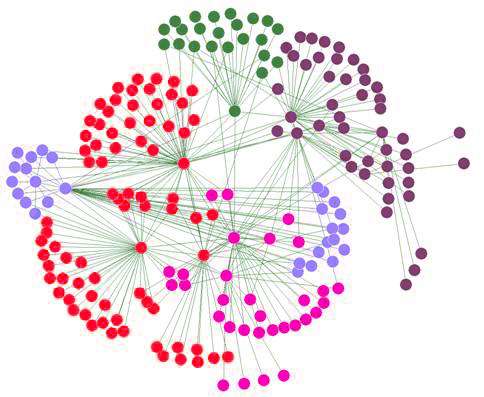April 20, 2016 report
'72 hours of science' project reveals new ideas on beneficial epidemics

(Tech Xplore)—A team of postdoc researchers at the Santa Fe Institute has concluded a '72 hours of science' project regarding beneficial epidemics, by posting their results on the arXiv preprint server. The team found that such epidemics typically spread much faster than harmful epidemics and outlined possible reasons for it.
The '72 hours of science' project was one of a of series being conducted at the Institute as a means of looking into different ways to conduct research—a group of researchers gathers together, picks a topic that has not been well looked at, divvies up tasks, does research and writes a report, all in 72 hours or less. In this new effort, the team chose to look at beneficial epidemics, which as the name implies, are epidemics that offer positive outcomes, such as viral or bacterial infections that cause only positive benefits to a host, but they also include other examples, such as social phenomenon or even activities such as new feeding techniques by birds. The team began by defining a unit of measurement of transmission of benefits, as a 'bene,' which they suggested must have two traits—it must cause benefit and it must transmit horizontally (in a single generation).
To get things rolling, the team created a computer model that was capable of showing how a bene is able to spread through a population, noting specifically the impact of connectivity. In creating the model, the researchers broke down transmission into three basic categories, the first of which they called 'evangelical' because of its similarity to the way religion can spread when missionaries are at work. Under such conditions, the team found, beneficial epidemics can spread very quickly—much faster than harmful epidemics. The second category was designated as "cool kids" as an analogy to the way others tend to emulate a new activity or word when used by the cool kids in a neighborhood or school. The third group was designated as the snob scenario, where a beneficial epidemic is restricted to just a few people or groups.
To test their ideas, the researchers compared their model against Google's Ngram corpus—which is a database of word usage in books printed from 1500 to 2008. The team used neologisms as benes, picking out certain words or phrases that were coined and then as their usage spread, as a means to measure the speed at which it occurred. They found that useful words became more popular, more quickly, following the evangelical path, whereas some words took more time to become popular, indicating a cool kids pattern, while others words became popular only among certain groups, following the snob scenario.
More information: Dynamics of beneficial epidemics, arXiv:1604.02096 [physics.soc-ph] arxiv.org/abs/1604.02096
Abstract
Pathogens can spread epidemically through populations. Beneficial contagions, such as viruses that enhance host survival or technological innovations that improve quality of life, also have the potential to spread epidemically. How do the dynamics of beneficial biological and social epidemics differ from those of detrimental epidemics? We investigate this question using three theoretical approaches as well as an empirical analysis of concept propagation. First, in evolutionary models, we show that a beneficial horizontally-transmissible element, such as viral DNA, spreads super-exponentially through a population, substantially more quickly than a beneficial mutation. Second, in an epidemiological social network approach, we show that infections that cause increased connectivity lead to faster-than-exponential fixation in the population. Third, in a sociological model with strategic rewiring, we find that preferences for increased global infection accelerate spread and produce super-exponential fixation rates, while preferences for local assortativity halt epidemics by disconnecting the infected from the susceptible. Finally, in an investigation of the Google Ngram corpus, we find that new words and phrases spread super-exponentially, as anticipated by our models. We conclude that the dynamics of beneficial biological and social epidemics are characterized by the remarkably rapid spread of beneficial elements, which can be facilitated in biological systems by horizontal transmission and in social systems by active spreading strategies of infected individuals.
via TechnologyReview and Gizmodo
© 2016 Tech Xplore




















